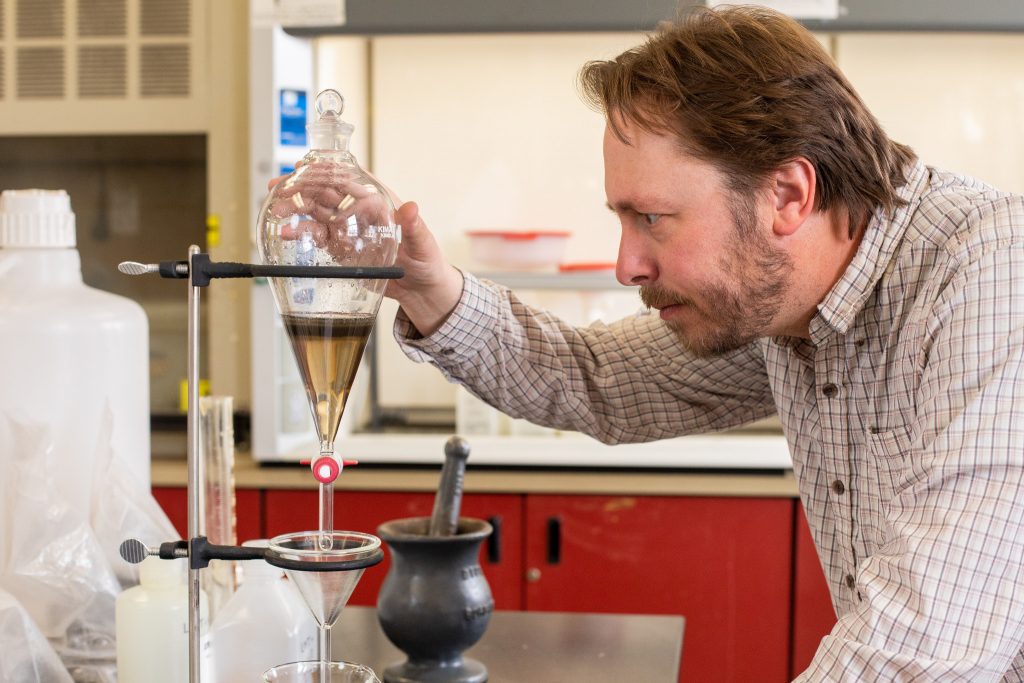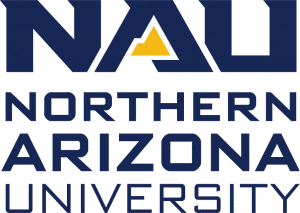April 16, 2019
As the climate changes, extreme weather and flooding are intensifying and occurring more frequently worldwide. Scientists believe that by studying warming events in Earth’s past, they can better understand how the current warming trend is triggering other changes to the environment.
As part of a large, multidisciplinary study involving eight institutions and a multimillion-dollar National Science Foundation grant, assistant professor Michael Elliot Smith of NAU’s School of Earth and Sustainability’s Division of Geosciences recently received a $190,000 subaward to excavate a climate report from the past.
By mapping the layers of rock in the Green River Formation in Wyoming—one of the world’s richest systems of ancient lake strata—Smith hopes to learn about the climate and flooding events during the Early Eocene Climatic Optimum (EECO) period 50 to 53 million years ago, when the climate was much hotter than it is now and carbon dioxide levels spiked, causing a greenhouse effect.
“We want to extract a record of climate change from a time when global warming was in full effect,” Smith said. “We want to know whether increased moisture in the atmosphere creates conditions for bigger storms and floods and test whether that actually happened during the Eocene’s greenhouse climate. Some of the preliminary data suggest that there is, in fact, a pretty strong correlation between flooding and higher temperatures.”
The project team, led by director Alan Carroll at the University of Wisconsin-Madison, represents a collaboration between more than 20 faculty researchers, postdoctoral scholars, Ph.D. students and undergraduate students at Northern Arizona University, the University of Michigan, North Carolina State University, the University of Minnesota, The University of Arizona, Boise State University and Binghamton University.
The NAU team will provide the stratigraphic framework of the basin so researchers at the other institutions can analyze the rock samples using chemical and magnetic techniques.
Smith’s team of graduate and undergraduate students also will spearhead the effort to map ancient river channel deposits. Most of the work involves measuring vertical columns of sedimentary rock from surface exposures in and around Rock Springs, Wyoming, where the landscape provides a rare detailed record of vastly different environmental conditions during the EECO.
Studies have shown that at that time, equatorial regions were likely so hot they were uninhabitable. Fossil evidence revealed the climate in southwestern Wyoming was subtropical, supporting palm trees, monkeys, ostriches and crocodiles. Smith wants to investigate that climate in detail—for example, was it hot but stable, or did temperatures fluctuate and spike? The information Smith and his students collect will be compared with information collected from ocean contexts that date to the same time.
“A lot of effort has gone into ocean-bed drilling to extract a record from this period and others. What we find in the EECO is that there’s so much ocean acidification corresponding with this warming event that often the record is condensed; there’s just not a lot of detail left. The opposite is true in this basin in Wyoming where this sediment was deposited in the lake bed.”
Augmented reality app to bring backyard geology to school-aged children
Another goal of the project is promoting geology to school-aged children. PI Smith realized that many elementary and middle school students aren’t exposed to much geology because field trips to interesting sites can be prohibitively expensive. To encourage kids to explore local geology, NAU and the University of Minnesota have partnered to develop an augmented reality app that will enable kids to use their cell phones to learn about the rocks around them.
“Imagine walking up to one of the cliffs outside and holding your phone up to it to learn what each layer means,” Smith said. “It will be like Pokémon Go, but with rocks!”
Smith, who joined NAU in 2014, focuses his research on the geochronology of sedimentary basins, deep time stratigraphy and marine geomorphology. He leads the Sedimentary Research Group at NAU, which seeks to better understand tectonic and landscape processes as they are recorded in terrestrial and marine basins.
“We work at the interface between sedimentary geology, geomorphology and geochronology,” he said. “We’re focused on the terrestrial stratigraphy of the North American Cordillera and the effects of bedrock lithology on modern and ancient sedimentary processes across a variety of environments.”
Kerry Bennett and Amy K. Phillips
Office of the Vice President for Research




